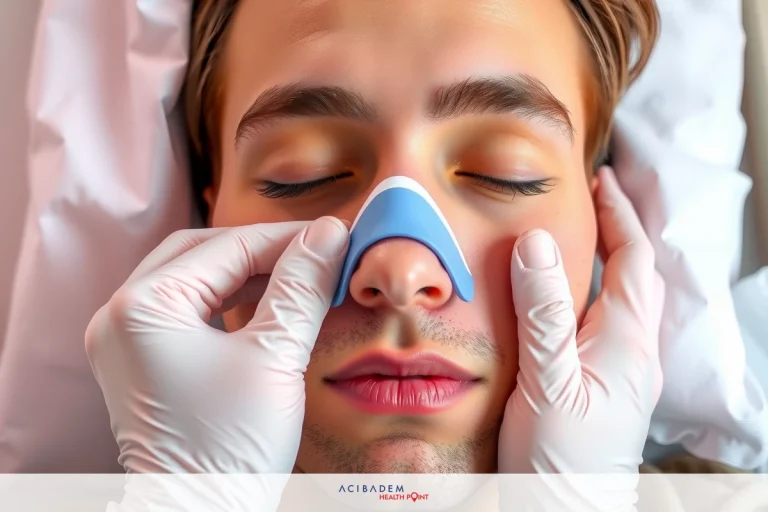How to Keep Swelling Down After Rhinoplasty
How to Keep Swelling Down After Rhinoplasty Navigating through the post-rhinoplasty phase can be quite a challenge. The nose, now tender and delicate, demands careful attention – particularly in managing swelling which naturally accompanies this procedure. Cold compress therapy often emerges as an efficacious solution during initial days following surgery. By gently applying ice packs or equivalently cold substances wrapped in cloth onto the nasal area for intermittent periods, inflammation may witness substantial decrease.
Elevation of one’s head while resting or sleeping proves beneficial as well; it curbs excessive swelling by encouraging effective blood circulation thereby preventing fluid buildup within nasal tissues. Another technique that has shown promising results is gentle massage around the nose – light pressure combined with circular motions aid significantly in reducing swelling without disrupting healing incisions.
Cold Compress Therapy
Cold compress therapy is a widely recommended method for swelling reduction after undergoing rhinoplasty. This traditional form of treatment involves the application of cold substances, such as ice packs or frozen peas, to the affected area. The key lies in wrapping these elements within a soft cloth prior to usage, thereby ensuring an optimum temperature that provides relief without causing discomfort.
The duration and frequency of this simple yet effective technique play critical roles in determining its impact on inflammation control during recovery. Typically, the advice leans towards implementing cold compress therapy multiple times throughout the day – each session lasting approximately 10-15 minutes. These short bursts prove quite beneficial; they allow for ample rest intervals which are essential to prevent skin damage due to prolonged exposure to extreme temperatures.
However, it’s not simply about how often one applies these compresses or how long each application lasts; attention must also be given to their delicate placement around the nasal area. An overly aggressive approach might lead you astray from your path towards quick recovery by exacerbating inflammation rather than curbing it. So remember – gentle movements are your best bet here! Incorporate this practice into your post-rhinoplasty care routine and observe its positive effects on swelling reduction and overall aftercare process.
Elevate Your Head
To alleviate swelling post-rhinoplasty, a simple yet potent technique is to elevate your head. This strategy works by taking advantage of gravity’s pull to enhance blood circulation and mitigate fluid accumulation within the nasal tissues. Whether you’re catching some shut-eye or simply resting, maintaining an elevated position for your head can contribute significantly towards preventing excessive swelling.
The practicalities of implementing this are straightforward. Consider using an additional pillow or two while sleeping or propping up the head of your bed slightly higher than usual. These minor alterations in your resting posture can facilitate better drainage from the nasal area, thereby supporting swift recovery after rhinoplasty surgery. Remember that discomfort might occur initially when adjusting to these changes but they become less noticeable with time as you adapt.
Enhanced circulation not only aids in diminishing swelling but also furnishes nutrients required for healing efficiently to nasal tissue – thus accelerating overall recovery process after undergoing rhinoplasty procedure! Therefore, don’t underestimate this seemingly simplistic act; instead recognize it as one amongst many valuable tips aiding smooth transition through post-surgery phase and ensuring optimal results from facial transformation journey undertaken via rhinoplasty.

Gentle Massage Techniques
Recovering from rhinoplasty doesn’t have to be a daunting process. Alongside the previously mentioned tips, another method that can support your journey towards reduced swelling involves the application of gentle massage techniques around your nose area. When performed correctly, these delicate movements can stimulate blood flow and expedite healing – contributing significantly towards an efficient recovery.
The key here is subtlety. Using clean hands, apply minimal pressure in circular motions across the affected region without exerting excessive force which might potentially disrupt any healing incisions or cause discomfort. It’s also important to mention that this technique isn’t recommended immediately post-surgery – always consult with your medical professional before beginning such practices to ensure it aligns well with individualized aftercare plans they might have put forth for you.
This soothing approach plays dual roles: besides aiding swelling reduction physically through increased circulation, its calming nature helps manage stress levels associated with undergoing surgery too! Combining all these valuable elements makes gentle facial massages a significant tool in optimising one’s overall experience during post-rhinoplasty phase. So as you continue navigating through this transformative
journey remember – sometimes less truly is more especially when it comes to applying pressure on sensitive regions like nasal tissue!
Frequently Asked Questions
How long should I apply cold compress therapy after rhinoplasty?
Cold compresses are typically recommended for the first few days following your surgery. However, since each person's recovery process is unique, it's ideal to consult with your healthcare provider about specific timelines.
Can elevating my head at night really help reduce swelling post- rhinoplasty?
Absolutely! Elevation of the head while resting or sleeping promotes better blood circulation and reduces fluid buildup in nasal tissues - both crucial factors in reducing post-surgical swelling.
When can I start incorporating gentle facial massages into my recovery routine?
Gentle massage techniques can be beneficial but shouldn't be started immediately after surgery. Always consult with your medical professional before implementing any new practices into your recovery plan to ensure they align well with their recommendations.
What other tips can aid in a smoother recovery from rhinoplasty?
Alongside cold compress therapy, elevated head position during rest and gentle massages, maintaining a healthy diet, staying hydrated and getting ample rest also play significant roles in supporting optimal healing post-rhinoplasty.











